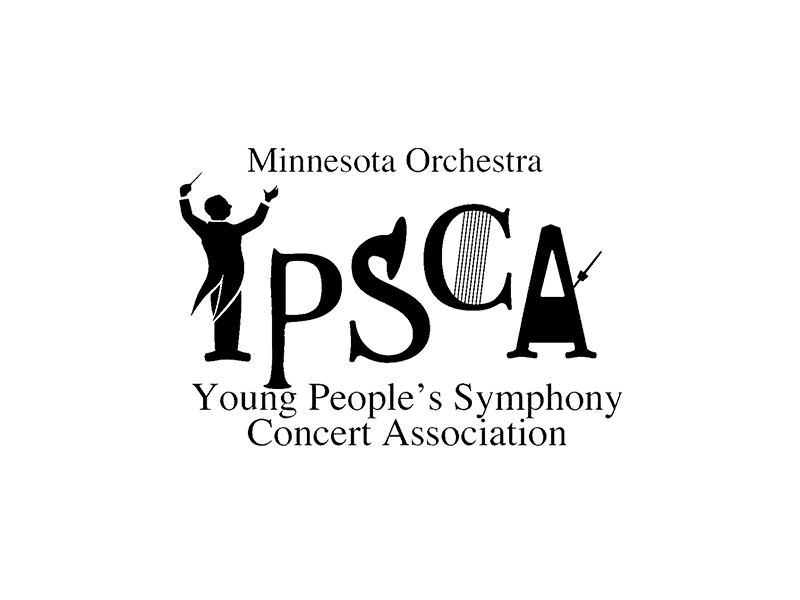
CONCERT ACTIVITIES
Science of Sound
Join us for an amazing online Young People’s Concert presented in partnership with the Science Museum of Minnesota and Twin Cities PBS! Students and families will see the full Minnesota Orchestra onstage and individual musicians partnering one-on-one with instructors at the Science Museum—where they’ll explore the physics behind sound production and reveal the physical impulses that our brains translate, like magic, into the music we hear and love. Demonstrations will explore concepts like frequency, amplitude and timbre, with musical selections by Johannes Brahms, Jennifer Higdon, Zhou Tian and more. Another treat: seeing it all come together in a star turn by violinist Catherine Carson, winner of YPSCA’s Concerto Competition!
About the Composers
Grammy-nominated Chinese-American composer Zhou Tian (JOH TEE-en) seeks inspiration from different cultures and strives to mix them seamlessly into a musically satisfying combination for performers and audience alike. His music has been performed by leading orchestras and performers in the United States and abroad, such as Jaap Van Zweden, Yuja Wang, the New York Philharmonic, Pittsburgh Symphony, Hong Kong Philharmonic, Mahler Chamber Orchestra, Dover Quartet, Chanticleer, and Shanghai Symphony, where he served as the Artist-in-Residence for the 2019/20 season. His Concerto for Orchestra—commissioned and recorded by the Cincinnati Symphony and Music Director Louis Langrée—earned him a GRAMMY Award nomination for Best Contemporary Classical Composition in 2018. In 2019, Beijing Music Festival named him “Artist of the Year.”
Zhou trained at the Curtis Institute of Music, Juilliard School and University of Southern California, he studied with some of America’s finest composers, such as Jennifer Higdon, Christopher Rouse and Stephen Hartke. He is associate professor of composition at Michigan State University College of Music.
First Sight, commissioned by the Minnesota Orchestra on the occasion of the orchestra’s centennial, is inspired by the folk dancers of the Dai people in China’s Yunnan province. To capture the raw and mesmerizing movements of the folk dancers, the music rises and falls through groovy rhythms and ever-changing intervals of seconds and thirds—almost sounding improvisational, and yet striving to remain clear and precise. The slower dance in the middle of the piece is calm and lyrical, as if clearing the stage in the morning in anticipation for a new night of musical venture.
- Birth Date, Location: 1981 | China, Modern Period
Robert Schumann's father was an author and book dealer so young Robert grew up with books all around him and he fell in love with books and writing. Robert also fell in love with music, starting to learn piano and composing his own music at the age of seven.
When he was a teenager, Schumann still wasn't sure whether he wanted to be a writer or a composer when he grew up, but after heading off to the University of Leipzig to study law, he knew he didn't want to be a lawyer. In Leipzig, Schumann took piano lessons with a teacher named Friedrich Wieck, whose star pupil was his daughter Clara. Robert Schumann and Clara Wieck fell in love but Clara's father absolutely refused to let them get married. It took years—and a court battle with Clara's father—before Robert and Clara Schumann could finally get married. Even though a hand injury kept Schumann from becoming a concert pianist, Clara was very successful as a soloist. She gave the first performance of many of his pieces, including his piano concerto.
In 1850, the Schumann’s went on a trip to the Rhineland, while there he was inspired to write his third symphony in response to the natural beauty he saw. The third movement, Nicht schnell (not fast), uses long lyrical melodies and very slow harmonies to create a calm stillness in the middle of this larger symphony.
- Birth Date, Location: June 8, 1810 | Germany
- Death Date: July 29, 1856, Romantic Period
Jean Sibelius was born in Finland. He started music lessons early and studied extensively in his native land, in Berlin and in Vienna. He wanted to be a professional violinist, but this was not to be. In 1893, he became interested in the folk legends of Finland and wrote the Kullervo Symphony, which is based on these tales. It made him famous. The country's government voted to pay him a state grant for the rest of his life. He devoted himself to composing and conducting, writing seven symphonies and several other important works. Much of Sibelius’ music draws on and celebrates Finnish culture.
Sibelius wrote his violin concerto in 1904, and revised it in 1905; it is his only concerto. The initial version of the concerto premiered with Sibelius conducting. Sibelius barely finished the work in time for the premiere, giving the soloist almost no time to prepare, and it was not received well. Sibelius withheld this version from publication and made substantial revisions, removing material he felt did not work. The new version premiered in 1905 with Richard Strauss conducting.
The final movement opens with percussion and lower strings playing an “eighth note—sixteenth note—sixteenth note” figure. The violin then enters with the first theme. This first section is full of virtuosic moments for the violin soloist.
The second theme starts in the orchestra and is almost a waltz. The violin takes up the same theme in variations, with arpeggios and double-stops.
The final section is introduced by the clarinets and low brass followed by another extremely virtuosic violin passage, leading into another full orchestra section and building to an exciting finale.
- Birth Date, Location: December 8, 1865 | Finland
- Death Date: September 20, 1957, Late Romantic Period
Johannes Brahms was born in 1833 in the German city of Hamburg. His father was a musician who played several instruments. Brahms loved music and learned to play multiple instruments as a child. By the time he was ten, he was such a good pianist that he performed in public, as part of a chamber music concert. Brahms also loved books and read everything he could find including novels, poetry and folk tales.
When Brahms was older, he toured as an accompanist, playing piano for a Hungarian violinist. That music—and the gypsy bands Brahms heard later on when he traveled to Hungary—inspired his Hungarian Dances, which were a hit with the public. He wrote 21 dances in all. The most famous one is the Hungarian Dance No. 5.
- Birth Date, Location: May 7, 1833 | Germany, Romantic Period
- Death Date: April 3, 1897
Peter Illyich Tchaikovsky grew up playing the piano and became a lawyer. His love for music caused him to go back to school to become a composer. His skill impressed his teachers so much that they offered him a job at the Moscow Conservatory as soon as he graduated. Tchaikovsky wrote hundreds of works but his most famous works are his three ballets.
Tchaikovsky wrote his opera Eugene Onegin, based on a famous Russian novel with the same title, between 1877-78. A polonaise is a type of dance; Tchaikovsky writes this polonaise for the opening of the third Act—a party at a rich nobleman’s house in St. Petersburg.
- Birth Date, Location: May 7, 1840 | Russia
- Death Date: November 6, 1893, Romantic Period
Kenji Bunch is one of America’s most engaging, influential and prolific composers. Bunch grew up in the Pacific Northwest, received conservatory training at The Juilliard School, and after 20 years in New York City, returned to reside in his hometown of Portland, Oregon, where he serves as Artistic Director of Fear No Music. His interests in history, philosophy, and intergenerational and cross-cultural sharing of the arts reflect in his work. The varied style references in his classical music writing authentically mirror the diversity of global influence on American culture. Irresistible grooves frequent Bunch’s music, revealing his deft ability to integrate bluegrass, hip hop, jazz and funk idioms. At the same time, the rich, tonal harmonies and drawn-out, satisfying builds which characterize his work have wide emotive appeal, and easily lend themselves to dance and film.
Also an outstanding violist, Bunch was the first student ever to receive dual Bachelor and Master of Music degrees in viola and composition from The Juilliard School and was a founding member of the highly acclaimed ensembles Flux Quartet (1996-2002) and Ne(x)tworks (2003-2011), and played fiddle and sang with the band Citigrass for over 15 years. He is a frequent performer with jazz, pop, folk, country, rock and experimental musicians.
Symphony No. 1: Lichtenstein Triptych for orchestra is a tribute to American pop artist Roy Lichtenstein. This work draws inspiration from the bold exuberance and color of three comic style paintings. Written in a highly stylized vocabulary infused with jazz and pop idioms, this piece was commissioned by the Magnum Opus Project, Kathyrn Gould, principal patron and commissioner, and facilitated by Meet The Composer.
- Birth Date, Location: July 27, 1973 | USA, Modern Period
Jennifer Higdon is one of America's most acclaimed and most frequently performed living classical composers. She has is a major figure in contemporary Classical music, receiving the 2010 Pulitzer Prize in Music for her Violin Concerto, a 2010 Grammy for her Percussion Concerto and a 2018 Grammy for her Viola Concerto, and a 2020 Grammy for her Harp Concerto. Most recently, Higdon received the Nemmers Prize from Northwestern University, given to contemporary classical composers of exceptional achievement who have significantly influenced the field of composition. Dr. Higdon holds the Rock Chair in Composition at The Curtis Institute of Music in Philadelphia. Jennifer Higdon describes her piece this way:
City Scape is a metropolitan sound picture written in orchestral tones. The final movement, Peachtree Street, is a representation of all those roadways and main arteries that flow through cities (Peachtree Street is the main street that runs through downtown Atlanta, the city of my childhood). Every main street that runs through a city is loaded with the energy and bustle of commerce, reflecting the needs and wants of its citizens through businesses. Because there is so much diversity in city streets, I’ve created a movement that explores the diverse sections of the orchestra, their relationships, and their combinations in creating a larger voice.
- Birth Date, Location: December 31, 1962 | USA, Modern Period
Guide to the Orchestra
See instruments in action, as demonstrated by Minnesota Orchestra musicians.
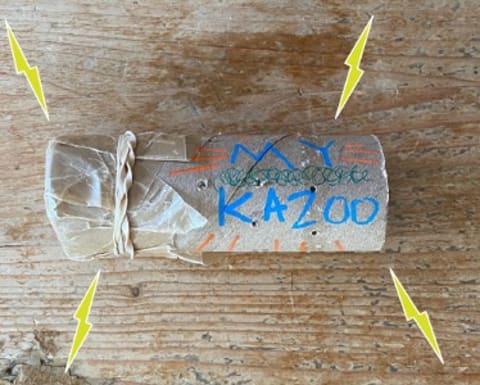
At-Home Activities
Explore soundwaves, frequency and more by making your own instruments or engaging in creative movement.
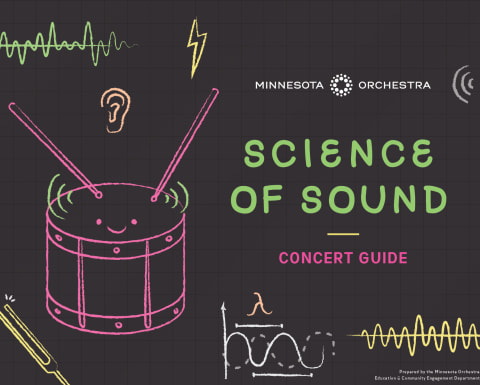
Teacher Activities
Explore our concert guide designed for use in the classroom—including activities, flashcards, and more.
Artists
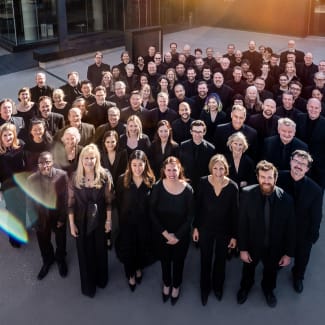
The Grammy Award-winning Minnesota Orchestra, now in its second century, ranks among America’s top symphonic ensembles, with a distinguished history of acclaimed performances in its home state and around the world; award-winning recordings, broadcasts and educational engagement programs; and a commitment to intentionally build concert programs to feature more works by composers of color, exploring music both contemporary and historic. This past fall, Danish conductor Thomas Søndergård began his tenure as music director.
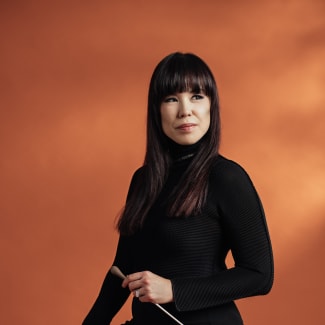
Sarah Hicks is the Minnesota Orchestra’s principal conductor of Live at Orchestra Hall, a role in which she oversees planning for and conducts many concerts in the broad-spectrum series of popular music, jazz, Broadway classics, movie scores and other genres. She also conducted the Inside the Classics and Sam & Sarah series for ten seasons.
Hicks’ career has seen collaborations with a diverse range of artists, from Hilary Hahn and Dmitri Hvorostovsky to Rufus Wainwright, Jennifer Hudson and Smokey Robinson. She has been an artistic leader in concerts featuring artists from Minnesota’s internationally-renowned popular music scene—including shows with The New Standards, multiple sold-out performances with Dessa and a live-in-concert recording released on Doomtree Records, and collaborations with indie band Cloud Cult. A specialist in film music and the film in concert genre, she is passionate about creating concert experiences which combine sight and sound, and that welcome new audiences to the orchestral genre.
Sponsored By
Thomas* and Mary Lou Detwiler
Mary Ann Feldman Music Education Fund
CORPORATE & INSTITUTIONAL SPONSORS




